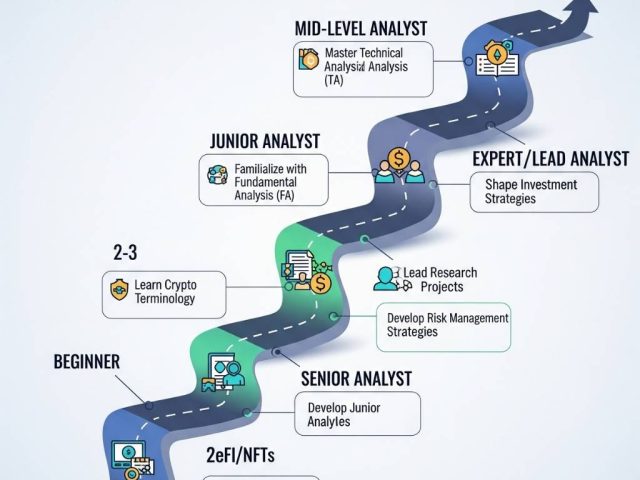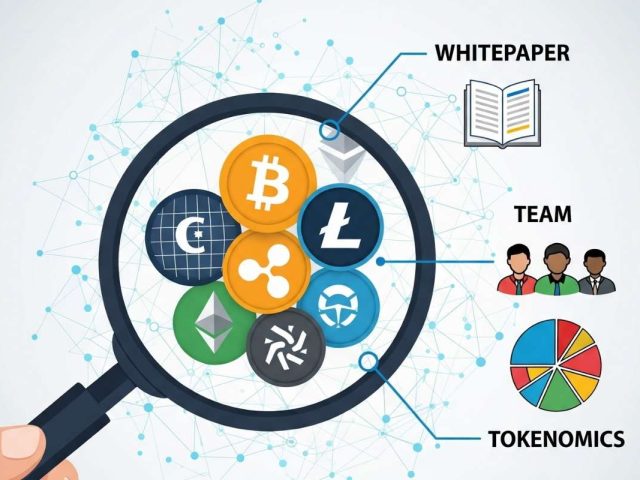The world of blockchain technology is no longer a niche phenomenon. It’s rapidly evolving into a complex and interconnected ecosystem, fostering innovation and disruption across various industries. But within this vast landscape, some blockchains stand out, attracting developers, users, and capital. These are the most popular blockchain ecosystems, and understanding their strengths and weaknesses is crucial for anyone navigating the ever-changing crypto space.
In this blog post, we’ll embark on a journey to explore the most popular blockchain ecosystems of 2024. We’ll delve into the established giants like Ethereum and the high-speed challenger, Solana. We’ll also discover rising stars like Cosmos and Avalanche, poised to shape the future of blockchain. Finally, we’ll peer into the crystal ball and discuss potential trends and predictions for these thriving ecosystems.
Remember, the quote by Andreessen Horowitz perfectly captures the essence of vibrant blockchain ecosystems: “The future is not centralized or decentralized. The future is a hybrid.” Let’s dive in and explore the exciting possibilities!
Top Contenders: The Most Popular Blockchain Ecosystems of 2024
The blockchain landscape is brimming with innovation, but a few ecosystems have consistently captured the spotlight. Let’s take a closer look at the top contenders in 2024:
Solana: The High-Speed Frontrunner
Solana has taken the crypto world by storm with its blazing-fast transaction speeds and incredibly low fees. Unlike its predecessor, Ethereum, which can sometimes feel like a rush-hour traffic jam, Solana boasts a smooth, high-performance highway.
Here’s what makes Solana a frontrunner:
- Key features and functionalities: Solana utilizes a unique Proof-of-History (PoH) consensus mechanism alongside Proof-of-Stake (PoS) to achieve its impressive speed and scalability. Imagine it like a well-oiled machine with multiple components working in perfect harmony.
- Investor interest and adoption: Solana has garnered significant interest from venture capitalists and institutional investors, fueling its growth. The number of decentralized applications (dApps) built on Solana is also rapidly increasing, creating a vibrant developer and user community.
- Potential challenges and limitations: While Solana is undeniably impressive, it’s still a relatively young ecosystem. Some concerns exist regarding network centralization and potential security vulnerabilities. These are areas the developers are actively working on addressing.
Is Solana the future? Only time will tell, but its speed, scalability, and growing adoption make it a force to be reckoned with in the blockchain space.
Ethereum: The Established Innovator
Ethereum, the undisputed pioneer of smart contract platforms, continues to be a major player in the blockchain ecosystem. It’s the brainchild of Vitalik Buterin, a visionary who saw the potential of blockchain technology beyond just cryptocurrencies.
Here’s why Ethereum remains a dominant force:
- Long-standing reputation and developer base: Ethereum boasts a loyal and experienced developer community. This strong foundation has led to the creation of a vast ecosystem of dApps, DeFi protocols, and innovative projects. Think of it as a well-established city attracting businesses and residents due to its infrastructure and reputation.
- Upcoming upgrades and advancements: Ethereum is undergoing a significant transformation with Ethereum 2.0 (Eth2) on the horizon. This upgrade promises to address scalability issues and enhance security, ensuring Ethereum’s long-term viability.
- Scalability concerns and potential solutions: Ethereum’s current Proof-of-Work (PoW) consensus mechanism struggles to handle high transaction volumes, leading to network congestion and increased fees. However, the shift to Proof-of-Stake (PoS) in Eth2 aims to solve this scalability bottleneck.
Is Ethereum past its prime? Absolutely not. While facing challenges, Ethereum’s established ecosystem, ongoing upgrades, and strong developer base position it for continued innovation in the blockchain space.
BNB Smart Chain: Binance’s Powerhouse
The Binance Smart Chain (BSC) has emerged as a formidable competitor within the smart contracts platform arena. Backed by the behemoth cryptocurrency exchange Binance, BSC offers a compelling alternative to Ethereum.
Here’s what makes BSC a rising star:
- Integration with Binance exchange and user base: BSC leverages the vast user base and liquidity of the Binance exchange. This seamless integration creates a familiar and user-friendly environment for existing Binance users to explore DeFi and dApps. Imagine a shopping mall with a familiar brand offering a new and exciting product category.
- Advantages for developers and projects: BSC boasts faster transaction speeds and significantly lower fees compared to Ethereum. This attracts developers seeking a cost-effective platform to build and deploy their dApps. Think of it as a business district with lower operational costs, attracting entrepreneurs to set up shop.
- Centralization considerations: A key concern regarding BSC is its centralized nature. Unlike truly decentralized blockchains, BSC is controlled by Binance, raising questions about censorship resistance and long-term control.
Is BSC a viable long-term option? The answer depends on your priorities. For developers seeking a fast and affordable platform, BSC is a great choice. However, if complete decentralization is paramount, other options might be more suitable.
Conclusion: Choosing the Right Ecosystem for You
The diverse landscape of blockchain ecosystems offers something for everyone. Whether you’re a developer seeking a platform to build your dApp, an investor looking for promising projects, or simply a curious explorer, understanding the strengths and weaknesses of each ecosystem is crucial.
Here are some key considerations when choosing the right ecosystem for you:
- Your goals and priorities: Are you seeking a fast and affordable platform for development? Do you prioritize security and a long-standing reputation? Understanding your needs will help you narrow down your options.
- The maturity of the ecosystem: Established ecosystems like Ethereum offer a wealth of resources and established projects. However, rising stars like Avalanche might present exciting new possibilities.
- The focus of the ecosystem: Some ecosystems cater specifically to DeFi, while others might be better suited for enterprise applications. Choose an ecosystem that aligns with your interests.
Remember, the blockchain space is constantly evolving. Stay informed, do your research, and don’t be afraid to explore different ecosystems to find the one that best suits your needs.





